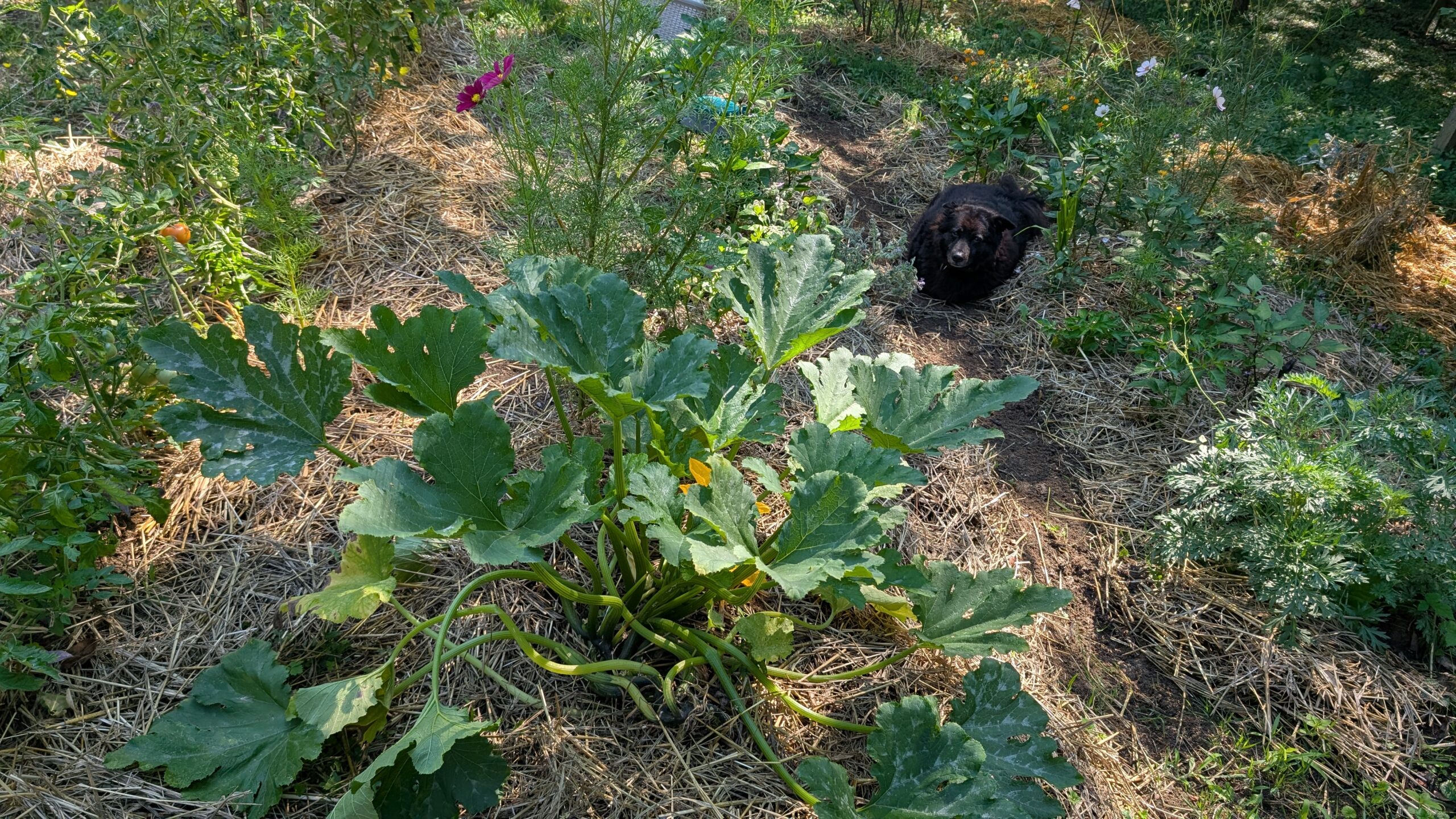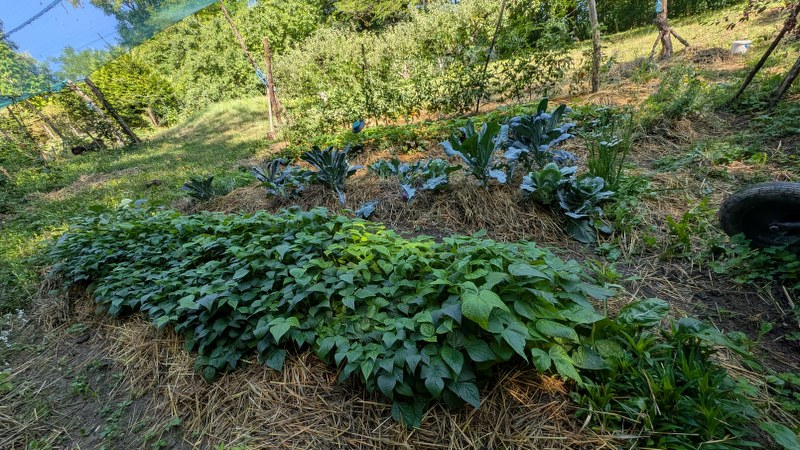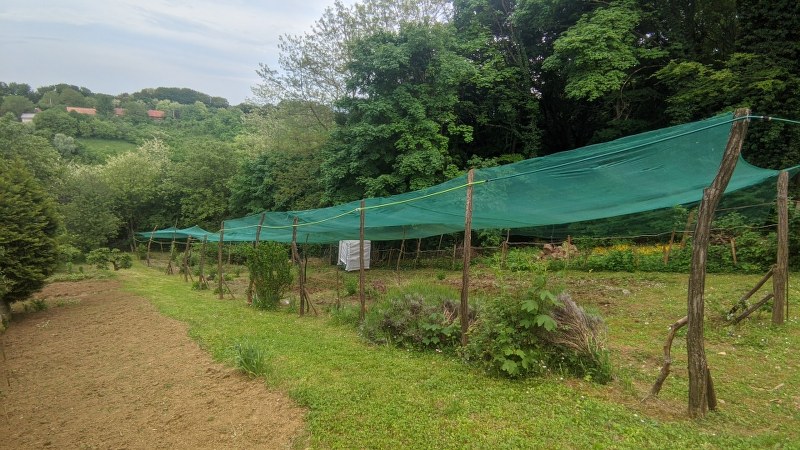When you say the word “Ajvar” in the Balkans it opens a neverending debate. What is the most accurate recipe? Are onions allowed, how many eggplants can be used, can it be baked or must it be cooked on the stove? This pepper relish has caused many fights and heated debates and the truth is everyone is wrong and everyone is right. Each country and even each village have their own recipe.
Ajvar cooking is an event that lasts at least 2-3 days depending on the amount you cook. Some people spend their whole vacation cooking ajvar. Even when you say that you’ve been cooking ajvar you get a sympathetic look cause every person in Balkans knows what it means to cook ajvar.
Some people say that there is no point in cooking ajvar if you don’t cook at least 50 kilos of peppers at once. Others cook small amounts. But everyone ends up in the same way: with a messy kitchen.
Ajvar is made with elongated bell-type pepper. We call them “roga paprike” which translates as horn pepper. Peppers got its name because they look like a horn. There are some well-known ajvar varieties like “Sirvija” and “Arlequin”, but also some newer ones that are as good as old ones. They are sweeter than regular bell peppers, can’t be used before they turn red, and are easy to peel. Ajvar can be made with bell peppers too, but only if you don’t want to peel them. The skin on regular bell peppers will never peel like on the ajvar horn peppers.
I always cook 10 kilos of peppers because this is the amount that will fit in my 8-liter pot which I can cook on the ceramic-glass stovetop. Any more than that I would have to cook in 2 pots and that’s too difficult to do.
Recipe:
10 kilos(22lbs) of peppers
3 kilos (6.6lbs)of eggplants
2 spoons(soup spoon) of sugar
2 spoons of salt
0.5 – 0.7 liters (0.13-0.18 gallons) of oil
4 spoons of vinegar
garlic powder
chili powder (optional)
The epic Ajvar saga begins with the baking of peppers and eggplants. To remove their skin they have to be pre-baked. The older households do this on top of the fire stove, some do a fire in the yard and bake them on fire, and we that don’t have these conditions bake them in the oven. The oven needs to be preheated at 200°C (392°F), then place on the baking paper a few whole peppers and bake them for 10 minutes on each side. Do not remove the seeds before baking and they should be completely dry. If baking in the fan oven they can be coated with a thin layer of oil to prevent too much smoke and the time can be shortened to 7 minutes on each side.
Once they are baked as soon as you remove the tray out of the oven, place them in a pot and cover with a lid. Once the pot is full seal it with some plastic wrap and put the lid on. The more the peppers are wrapped the easier will it be to peel them. The same process is done with eggplants. Eggplants can be cut in half and baked for 20 minutes without turning or kept whole and turned after 10 minutes. They should also be placed in the pots and sealed.
Peppers should stay like this for at least 12 hours. They will need a lot of time to cool down and they can’t be peeled unless they are cool.
Once they cool down, peel the skin off the peppers, if there are bits of skin that won’t peel just leave them. A little skin won’t be a problem, but too much could make ajvar taste bitter and pieces of skin would stay look like a rolled piece of paper.
While cleaning the peppers and eggplants remove also the seeds and wash them shortly in a pot of water. Place them in a colander and leave them to strain. The dryer the vegetables are the less time will ajvar need to be cooked so don’t rush it. I usually get up very early and peel them and they are left to dry the whole morning.
Once the peppers and eggplants are dry cut them in a blender to get small bits of peppers. And place the cut peppers in a cooking pot. Add half of the sugar, salt, and oil.
Here is where the battle begins. The ajvar will put up a big fish, starting with the stick to pot attack, which will make you stir the pot every minute or two so don’t think about doing anything else while cooking ajvar. Forget about going to the bathroom, washing dishes, or even playing a game on the phone cause it will surprise you with the sticking attack and you’ll have to pour the ajvar into another pot to clean the burned pot and this will make an incredible mess in the kitchen. Not to mention that this will prolong the cooking time.
So stir the pot until your hand falls off, then change to the other hand and stir some more.
After an hour and a half add the rest of the sugar, salt, and oil, add garlic and chili powder if you want it to be hot.
This is when things get ugly, once the ajvar is almost cooked it will give its final attack- the spitting attack.
Since the ajvar is very dense there will be no normal boiling it will rather puff the bits in the ail, similar to jam. And since there is no point in putting the lid cause at this point you have to still almost non stop, this will mess up your kitchen completely. I can just say that I’ll have to paint the kitchen ceiling again.
Also, the spitting attack can burn your hands really badly, so consider using some kind of gloves.
Few minutes before the end add vinegar.
The ajvar is cooked when it becomes light red and has a consistency of a chunky puree. The amount of oil depends on the peppers. Add oil until the peppers stop “drinking”, but no more than 0.7L or it will be very oily. The ajvar shouldn’t be oily. The oil should be absorbed by the peppers.
The ajvar cooking is hard work, stirring big amounts can be very difficult, so if you can’t do it in one day you can take it off the fire after an hour and continue the next day. Some people cook it for 2 to 3 days.
The ajvar should be cooked for at least 2:30 hours. If peppers haven’t been dried well it can take up to 4 hours to cook.
15 minutes before the end wash the jars and place them in the oven. Heat the oven to 100°C(212°F) together with the jars to keep them from cracking. When the oven heats leave the jars inside for 30 minutes.
Stop cooking the ajvar 15 minutes before filling up the jars. This will stop it from spitting on you while filling the jars, but it will still be hot enough for filling.
Fill the jars, put the lids, and put the jars in the oven. The easiest way is taking one jar out of the oven, filling it, taking another jar, and placing the filled one back in the oven. This way the jars won’t be in the way and they will keep the temperature.
Once all the jars were filled keep them in the turned-on oven at 100°C for an hour, then turn off the oven and leave the jars to cool down inside the oven. This will take almost a whole day. If you need to use the oven you can put them in the basket or a plastic pot and cover them with pillows and blankets. The jars need to cool down slowly. Do not leave them to cool outside.
The ajvar can be used for a week or 2 after opening the jar so think about the size of the jar you want to use. Closed jars with good lids can be stored for 2 or even 3 years.
Ajvar can be used as a relish next to some meaty meal, as a puree that is added to the meal while cooking, or eaten on bread or toast like the butter. The last way is the most common here, a sandwich with ajvar is something very popular.
Ajvar monster will fight you every step of the way, and it’s one of the most difficult preserved food to be made, but it’s with it if you want to taste peppers during the winter.











Leave a Reply